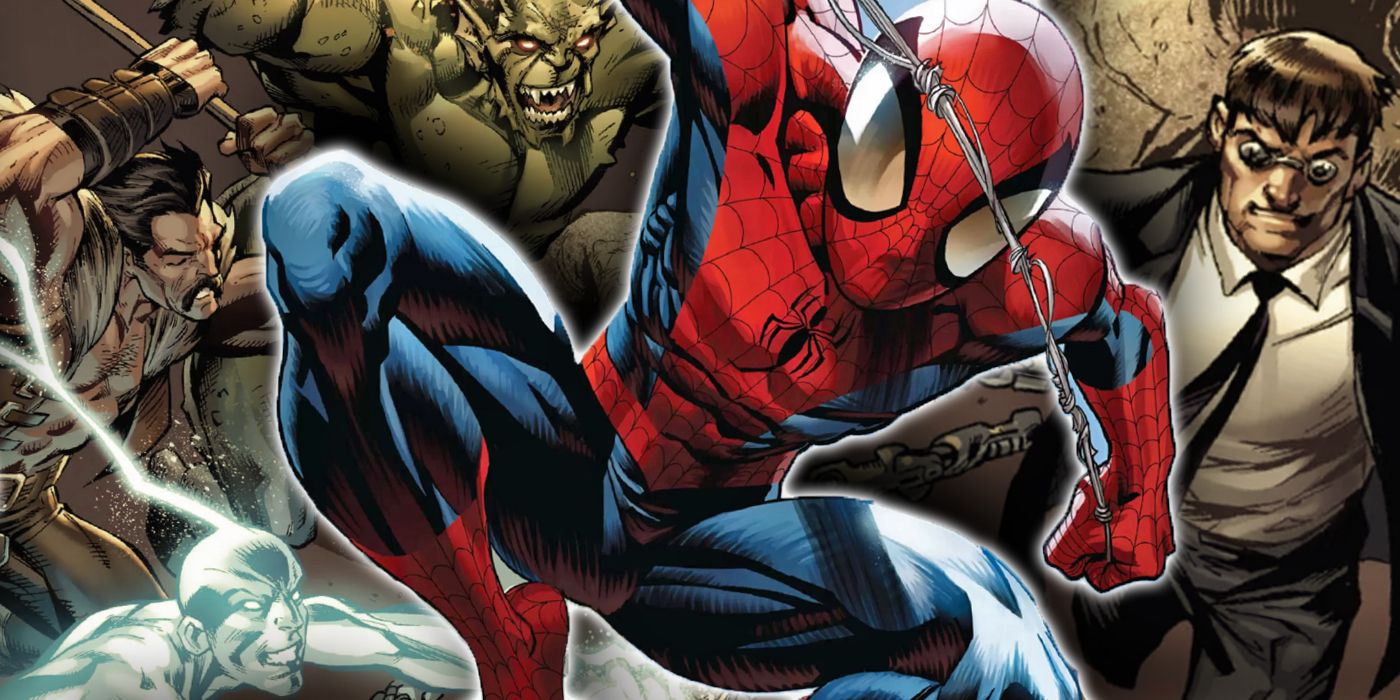Ultimate Six depicted Spider-Man’s Rogues Gallery uniting for the first time and recruiting him to their ranks to do battle with the Ultimates.
While the Ultimate Marvel Universe drew inspiration from many classic Marvel stories, many events played out wholly original within Ultimate Marvel compared to its mainstream counterpart. In almost every universe, Spider-Man is reviled as an outcast by the public at large as civilians mistrust the well-meaning hero, but he’s rarely done anything worth that public ire. However, that’s not the case in the Ultimate Universe, where Spider-Man joined the Sinister Six and attacked the White House.
The events of Brian Michael Bendis and Trevor Hairsine’s Ultimate Six depicted the first time Spidey’s rogues united to form a team in that world, and they recruited Spider-Man among their ranks. It came down to the Ultimates to stop them, and what ensued was a memorable battle that took place as the entire country watched.
In the mainstream Marvel Universe, Spider-Man’s greatest villains united as the Sinister Six in an effort to overpower the one hero who could defeat each of them individually, but the group’s origins were quite different in the Ultimate universe of 1610. In this universe, the Green Goblin, Doctor Octopus and Peter Parker can all tie their powers back to the same Oscorp lab. For this reason, the two villains look upon Spider-Man more paternally than antagonistically. When they form a team, they want Peter to join them.
Spider-Man’s five biggest foes undergo counseling together under the direction of Henry Pym. Pym is known as Giant-Man on the government super team the Ultimates, and the criminals rebuff his attempts at group therapy. Doctor Octopus, Green Goblin, Electro, Sandman and Kraven the Hunter have all been imprisoned for “genetic crimes” since their superhuman powers upset the delicate world order. When the five bust out of their prison, that balance is horrifically upset as they set their sights on not only their revenge over Spider-Man but the U.S. government as a whole.
In seeking to corrupt Spider-Man, the team kidnaps him and threatens his family to hurt Aunt May if Peter doesn’t join them in storming the White House. The goal is to corrupt Spider-Man and turn the country against him so that he will truly become an ally, but as they arrive on the White House lawn they find staunch resistance from the Ultimates. Captain America, Thor, Iron Man, Hawkeye and Wasp lock into battle with the Ultimate Six, and Spider-Man is forced into a moral dilemma as he is caught in the middle.
He and Captain America lock into battle as the World War II hero tries to talk sense into the young hero. Spider-Man joins the battle against his foes and helps turn the tides, winning the fight and locking them in prison where they can no longer threaten his family. But the damage to his reputation remains. In a universe where Magneto already forced the president to lick his boots clean on television, attacking the White House is the most super villainous thing that Spider-Man could do.
The story itself is a wild ride, but the aftermath helps justify Spider-Man’s public perception as a menace in a way that sometimes feels lacking in the 616. After performing so many great deeds as Spider-Man, it can be hard to buy why the public would be mistrustful of him, but if one of his earliest and most public acts were to do battle with America’s favorite superhero in an attempt to attack the president, the perception becomes more understanding.
The reader always knows the full story, but the civilians within the world rarely do. The hero went on to be hounded by J. Jonah Jameson and the media until his heroics during the Ultimatum Wave and sacrifice in combat with the Six that cost him his life provided the heroic ending he always deserved. He had quite the journey in the public eye, and Ultimate Six was one of the most interesting chapters along the way.
About The Author
